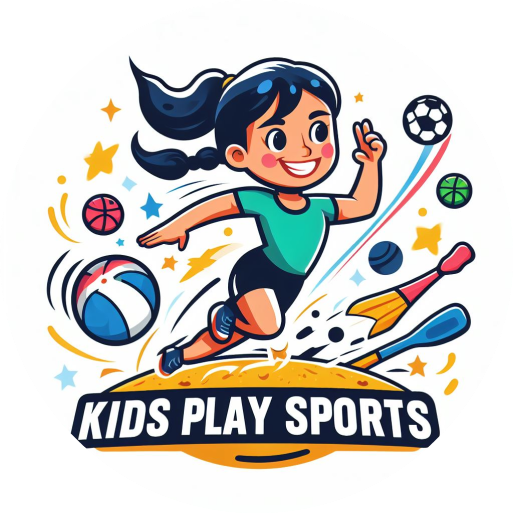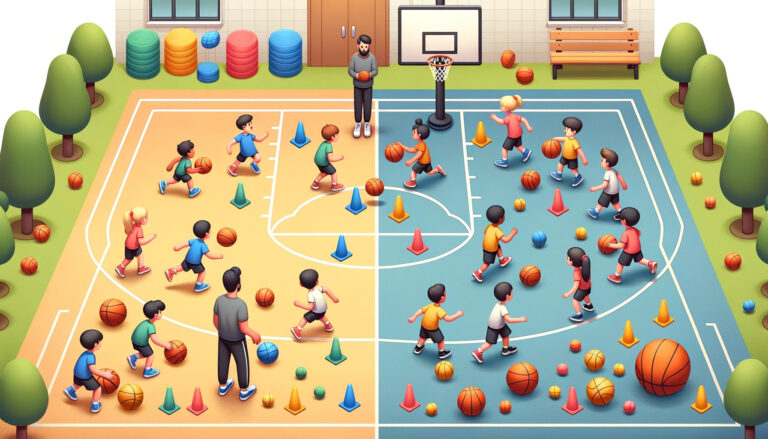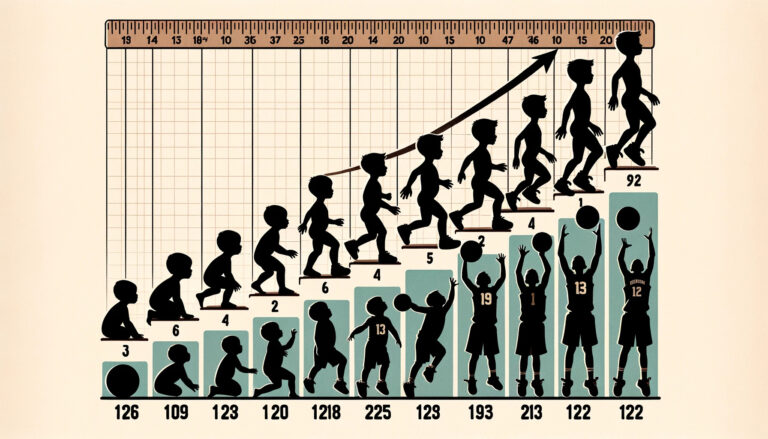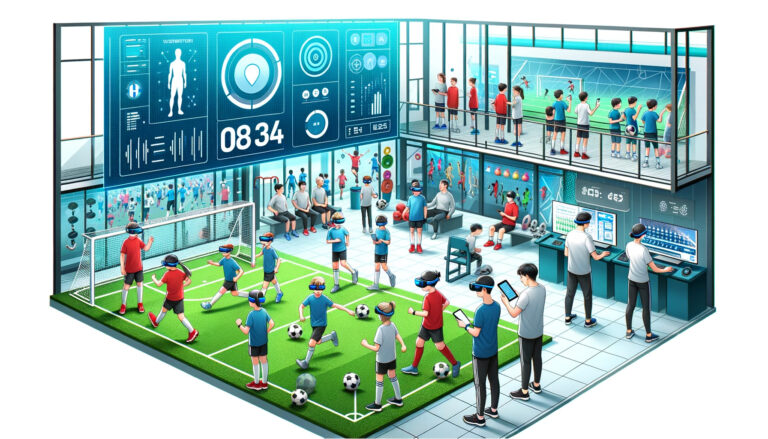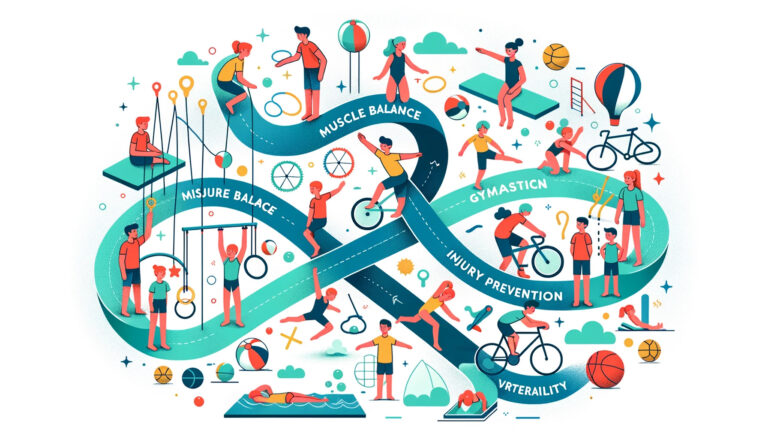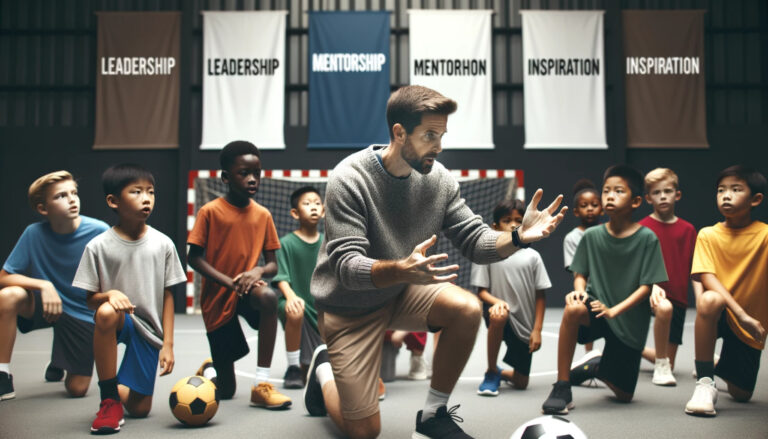The Science Behind Kids’ Muscle Development and Sports
- The Importance of Rest and Recovery in Young Athletes’ Regimens - October 23, 2023
- Boosting Stamina and Endurance in Young Athletes: Tips and Tricks - October 23, 2023
- The Role of Coaches in Shaping Young Athletes - October 23, 2023
The Importance of Physical Activity for Kids’ Muscle Development and Sports
Physical activity plays a crucial role in the muscle development of children, setting the foundation for their future athletic abilities. Regular exercise helps children build strong and healthy muscles, which are essential for participating in sports and other physical activities. When kids engage in physical activity, their muscles are stimulated and challenged, leading to growth and strengthening. Not only does physical activity promote the development of muscles, but it also enhances overall health, improves cardiovascular fitness, and helps maintain a healthy weight in children.
Moreover, physical activity for kids is not limited to just structured sports activities. Simple activities like running, jumping, climbing, and playing active games can contribute significantly to muscle development. These activities involve a range of movements and muscle groups, encouraging overall muscle growth and flexibility. Regular physical activity also helps children improve their coordination, balance, and agility, enabling them to excel in sports and other physical pursuits. In addition to the physical benefits, engaging in activities that promote muscle development also has positive effects on children’s mental and emotional well-being, boosting their self-esteem, confidence, and cognitive function.
The Different Types of Muscle Fibers in Children and How They Develop
Muscles are an integral part of a child’s physical development and sports performance. They provide strength, power, and endurance necessary for activities like running, jumping, and throwing. Understanding the different types of muscle fibers in children and how they develop is crucial in optimizing their athletic abilities.
Children have primarily two types of muscle fibers: slow-twitch (Type I) and fast-twitch (Type II). Slow-twitch fibers are responsible for tasks that require endurance, such as maintaining posture or engaging in activities with sustained effort. On the other hand, fast-twitch fibers are utilized for explosive movements like sprinting or jumping. As children grow and develop, the proportion of these fiber types can change. Additionally, factors like genetics and physical activity level can influence the development and distribution of these muscle fibers in children.
The Role of Nutrition in Supporting Kids’ Muscle Development for Sports
Proper nutrition plays a critical role in supporting kids’ muscle development for sports. As children engage in physical activities and sports, their growing bodies require adequate energy and nutrients to fuel growth, repair muscles, and enhance performance. In particular, protein intake is essential for muscle development in children. Proteins, which are made up of amino acids, provide the building blocks for muscle tissue. Therefore, it is important for kids to consume protein-rich foods such as lean meats, fish, poultry, eggs, dairy products, legumes, and nuts to support the growth and repair of their muscles. Additionally, carbohydrates are a key source of energy for active children, as they provide the fuel necessary for muscle function during exercise. Including a variety of whole grains, fruits, vegetables, and dairy products in their diet can ensure an adequate intake of carbohydrates for optimal muscle development. Overall, a well-balanced diet, consisting of a combination of proteins, carbohydrates, healthy fats, vitamins, and minerals, is essential to support kids’ muscle development for sports.
Aside from protein and carbohydrates, certain nutrients are particularly important for muscle development in children. Calcium, for example, is necessary for the development and strength of bones, which in turn support muscle growth and function. Milk, cheese, yogurt, and fortified plant-based alternatives are excellent sources of calcium. Vitamin D also plays a crucial role in muscle health, as it helps the body absorb calcium. Exposure to sunlight, fatty fish, and fortified milk are some ways to obtain vitamin D. Iron is another vital nutrient for kids’ muscle development, as it carries oxygen to the muscles and helps them work efficiently. Iron-rich foods like lean red meat, poultry, fish, beans, and fortified cereals should be included in children’s diets. By providing children with an appropriate balance of nutrients through a varied and well-rounded diet, parents can effectively support their muscle development and optimize their performance in sports.
The Impact of Growth and Development on Kids’ Muscle Strength and Coordination
Growth and development play a crucial role in shaping kids’ muscle strength and coordination. As children grow, their muscles undergo significant changes, both in terms of size and composition. During periods of rapid growth, such as infancy and adolescence, their muscles tend to develop at a faster rate. This growth is accompanied by increased muscle fiber size and length, leading to improved muscle strength and power.
Furthermore, as children reach different developmental stages, their neuromuscular connections become more refined, enhancing their coordination and motor skills. These improvements are a result of the brain’s ability to better coordinate muscle contractions and movements. As a child’s nervous system matures, their muscle fibers become more synchronized, allowing for smoother and more precise movements. This synchronization is essential for activities such as running, jumping, and throwing, which require the coordination of multiple muscle groups.
How Kids’ Muscle Development Differs from Adults and Its Implications in Sports
Kids’ muscle development differs significantly from that of adults, both in terms of structure and function. One of the most notable differences is the rate at which muscles grow. While adults experience a steady increase in muscle mass throughout adolescence and early adulthood, children undergo rapid periods of growth, known as growth spurts. These growth spurts are accompanied by an increase in bone length, which can temporarily affect muscle coordination and strength. As a result, children may experience periods of clumsiness and reduced athletic performance during these growth phases.
Additionally, children have a higher proportion of slow-twitch muscle fibers compared to adults. These fibers are responsible for endurance and are more present in activities that require sustained effort, such as long-distance running. On the other hand, adults have a higher proportion of fast-twitch muscle fibers, which contribute to explosive power and strength. This difference in muscle fiber composition implies that children may excel in endurance-based sports, such as cross country or swimming, while adults tend to perform better in activities requiring bursts of power, such as weightlifting or sprinting.
Understanding these differences in muscle development between children and adults is crucial when designing training programs for young athletes. Coaches and parents must take into account the unique characteristics of children’s muscles to promote optimal development and reduce the risk of injury. By tailoring exercise routines that focus on building both strength and endurance, young athletes can enhance their overall performance and reduce the potential negative effects of growth spurts on their coordination and agility.
The Benefits of Resistance Training for Kids’ Muscle Development and Sports Performance
Resistance training, also known as strength training or weightlifting, offers a multitude of benefits for kids’ muscle development and sports performance. Engaging in regular resistance training exercises can help children build stronger muscles, which in turn can enhance their overall athletic abilities. By incorporating resistance training into their physical activity routine, kids can experience improvements in not only muscle strength, but also endurance, power, and flexibility.
One of the primary benefits of resistance training for kids is that it promotes healthy bone development. As children engage in resistance exercises, the repetitive stress placed on their bones stimulates the production of new bone tissue, leading to increased bone density. This is especially important as children grow and their bodies undergo rapid bone growth. Stronger bones not only protect against fractures but also contribute to improved posture and stability, enhancing children’s athletic performance in various sports and activities. Additionally, resistance training helps to maintain and improve muscle coordination, enabling kids to move more efficiently and effectively in their chosen sports.
The Role of Hormones in Kids’ Muscle Development and Their Effects on Sports Performance
Hormones play a significant role in kids’ muscle development and can greatly impact their sports performance. During puberty, the body undergoes hormonal changes that trigger muscle growth and development. Testosterone, a hormone found in both boys and girls, plays a key role in increasing muscle mass and strength. It stimulates protein synthesis, which is essential for building and repairing muscle tissues. Additionally, growth hormone, produced by the pituitary gland, also contributes to muscle growth by stimulating cell reproduction and regeneration.
The effects of hormones on sports performance in kids can be profound. Higher levels of testosterone can lead to increased muscle size, strength, and power, giving young athletes an advantage in sports that require speed, agility, and explosiveness. Conversely, hormonal imbalances or deficiencies may hinder muscle development and performance. It is essential for young athletes and their parents to understand the role of hormones in muscle development and properly manage their hormonal health to achieve optimal sports performance.
The Influence of Genetics on Kids’ Muscle Development and Athletic Abilities
Genetics plays a significant role in kids’ muscle development and athletic abilities. The genes inherited from parents determine the potential for muscle growth and strength in children. These genetic factors can determine the type of muscle fibers a child possesses, which can affect aspects such as muscle size, endurance, and explosive power. Furthermore, genetic variations can influence how efficiently children respond to training, allowing some individuals to gain strength and muscle mass more easily than others.
In addition to muscle development, genetics also contribute to kids’ athletic abilities. Certain genetic variations may enhance aspects like speed, agility, and coordination, giving some children a natural advantage in sports. However, it is essential to note that genetic potential is not the sole determinant of success in athletics. Environmental factors and training also play a crucial role in realizing a child’s athletic abilities, even if they may have genetic advantages. Understanding the influence of genetics on kids’ muscle development and athletic abilities can help tailor training programs and provide opportunities for children to reach their full potential.
The Role of Age-Appropriate Training Programs in Enhancing Kids’ Muscle Development for Sports
One of the key factors in enhancing kids’ muscle development for sports is the implementation of age-appropriate training programs. These programs are specifically designed to cater to the needs and capabilities of children at different stages of their growth and development. By tailoring the training to their age, kids can experience optimal muscle growth and improved sports performance.
Age-appropriate training programs take into consideration the physical, psychological, and physiological characteristics of children. They focus on developing not only muscle strength but also coordination, agility, and flexibility. These programs typically start with exercises that promote fundamental movement skills and gradually progress to more advanced training techniques as the child matures. This ensures that kids are challenged at a level that is suitable for their age and eliminates the risk of overexertion or injury. By providing a structured and safe training environment, age-appropriate programs play a crucial role in enhancing kids’ muscle development for sports.
The Importance of Rest and Recovery in Kids’ Muscle Development and Sports Performance
Rest and recovery are often overlooked when it comes to kids’ muscle development and sports performance. However, they play a crucial role in allowing the body to repair and rebuild muscle tissue, as well as preventing injuries. When children engage in physical activity or sports, their muscles undergo stress and micro-tears, and it is during rest and recovery that these muscles are able to heal and grow stronger.
Rest is essential because it allows the body to replenish its energy stores and reduce fatigue. Kids need quality sleep and rest days in between intense workouts or sports activities to give their muscles the time they need to recover. Without adequate rest, the risk of overuse injuries increases, and kids may experience symptoms of overtraining, such as decreased performance, fatigue, and irritability. Therefore, incorporating rest and recovery periods into kids’ training programs is crucial for ensuring optimal muscle development and sports performance.
